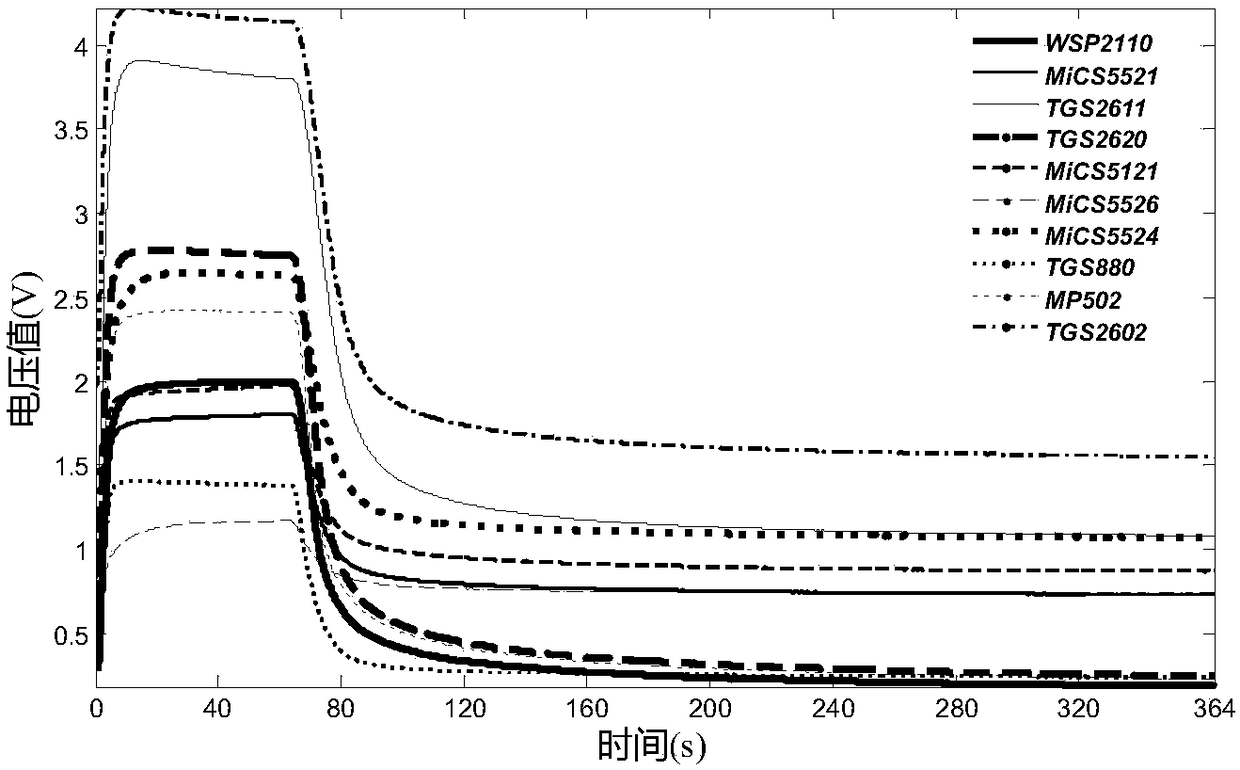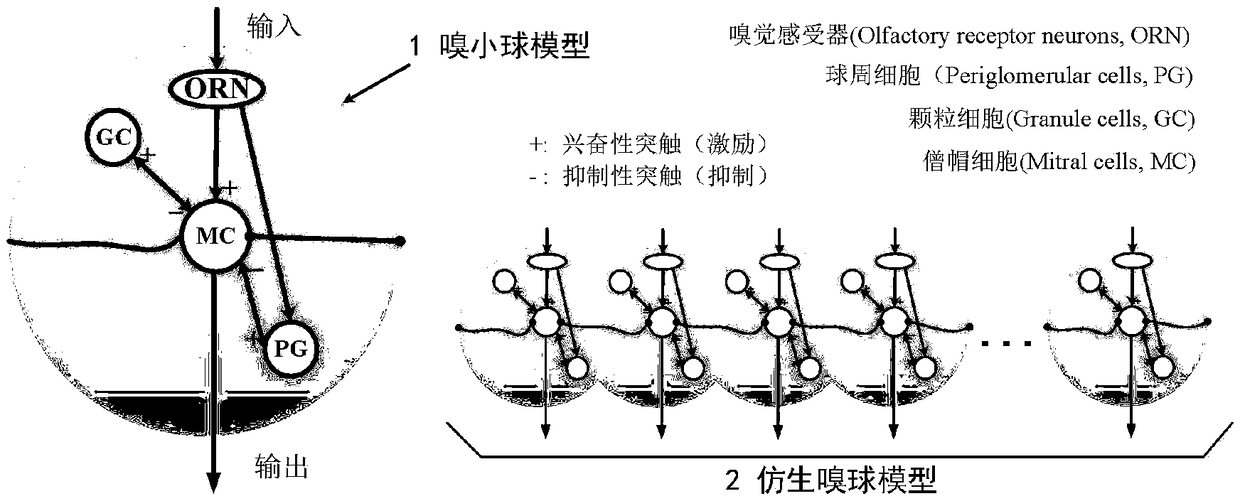Electronic nose recognition method based on bionic olfactory bulb model and convolutional neural network
A convolutional neural network and electronic nose technology, applied in the field of electronic nose recognition, can solve the problems of unfavorable promotion of electronic nose technology, time-consuming, lack of versatility, etc., achieve good algorithm versatility, simplify data analysis steps, and realize end-to-end The effect of end-to-end learning
- Summary
- Abstract
- Description
- Claims
- Application Information
AI Technical Summary
Problems solved by technology
Method used
Image
Examples
Embodiment Construction
[0023] The present invention will be described below in conjunction with the accompanying drawings and embodiments.
[0024] The electronic nose structure that the present invention adopts is as figure 1 As shown, the electronic nose can not only directly detect gas samples, but also be used to detect liquid samples such as liquor. The electronic nose mainly includes three parts: evaporation and sampling device, sensor air chamber reaction device, and control and data acquisition preprocessing system.
[0025] The identification method involved in the present invention takes the detection of seven liquor samples as an example.
[0026] Table 1 Seven kinds of liquor brands, raw materials, origin and other information
[0027]
[0028] The main workflow of the electronic nose is as follows: figure 1 As shown, firstly, the liquor sample in the evaporating gas chamber is fully evaporated by heating with a silicon heating belt, and then the clean air is injected into the carr...
PUM
 Login to View More
Login to View More Abstract
Description
Claims
Application Information
 Login to View More
Login to View More - R&D
- Intellectual Property
- Life Sciences
- Materials
- Tech Scout
- Unparalleled Data Quality
- Higher Quality Content
- 60% Fewer Hallucinations
Browse by: Latest US Patents, China's latest patents, Technical Efficacy Thesaurus, Application Domain, Technology Topic, Popular Technical Reports.
© 2025 PatSnap. All rights reserved.Legal|Privacy policy|Modern Slavery Act Transparency Statement|Sitemap|About US| Contact US: help@patsnap.com



